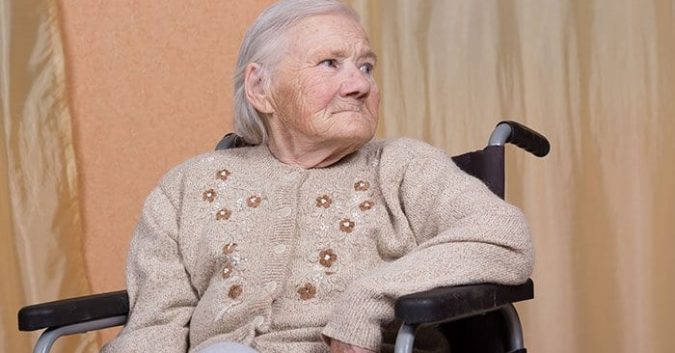Nursing homes are a critical part of the U.S. healthcare infrastructure. As baby boomers continue to retire and the elderly population continues to soar, the need for retirement homes and assisted living spaces rises as well. However, it’s becoming increasingly clear that those needs are not being met. In fact, thousands of elderly patients throughout the country are suffering abuse at the hands of the very facilities which were built to care for them.
There are currently more than 1.4 million nursing home residents in the U.S., and among them more than 14,000 have reported experiencing some type of physical abuse, neglect, or even exploitation. But even those figures are limited by how one defines “abuse.” When you factor in malnourishment and dehydration, for example, studies show that anywhere from 35 to 85 percent of nursing home residents are subjected to abuse. According to one 2000 study, the level of care in some nursing homes is comparable to that of the third world.
Worse yet, there is strong evidence that such incidents are severely underreported, meaning the problem is far worse than it seems.
What Constitutes ‘Abuse’?
So-called “elder abuse” comes in many forms. For some patients, it may be the result of neglect stemming from an overstretched nursing facility. Such was the case with Jack Furumura, a 96-year-old nursing home patient who died after suffering weeks of severe dehydration in a California nursing home.
Sometimes, the problem is mere negligence, like in the case of Mary Meuse, an 83-year-old Massachusetts resident who died after falling from a mechanical lift. The lift was being improperly operated by a 21-year-old aide without any assistance. Meuse broke both her legs and suffered internal bleeding, and yet the home’s staff did not take her to the hospital until the following day, when it was too late. Less than 2 months later, a second death was reported at the exact same facility — with almost the exact same cause of death!
Still some nursing homes mistreat their patients by leveling unnecessary care upon them. One facility in South Carolina placed an 80-year-old woman who couldn’t keep her eyes open in a standing frame for 84 minutes of physical therapy — 2 days before she died. That same facility was found to have subjected a 92-year-old terminal cancer patient to “48 minutes of physical therapy, 47 minutes of occupational therapy, and 30 minutes of speech” 2 days before his death.
The Day-to-Day Reality
Unfortunately, these reports only ever seem to occur after a tragedy. They fail to depict the day-to-day reality many senior citizens face at the hands of a physically or verbally abusive nursing staff. This is partly why the issue has been so underreported until recently.
It’s tempting to assume that one of the underlying causes here is the overtaxed, overstressed, and overpopulated state of many nursing homes in the U.S. But the truth is that the nursing home industry is anything but underfunded or overpopulated. A 2012 report by federal health care inspectors found that nursing homes collectively over-bill Medicare by a stunning $1.5 Billion per year for treatments patients either do not need or never even receive.
As if that wasn’t enough, there’s also ample evidence that senior citizens are being shorted both inside and outside the nursing home. A 2010 study published in the American Journal of Public Health found that the most commonly reported form of elderly abuse is financial mistreatment — the deliberate exploitation, or even just extortion, of helpless seniors for pure monetary gain.
A Move Toward Tougher Regulation in the Bay State
Perhaps motivated by recent tragedies at one of its own assisted living centers, Massachusetts recently took steps to level heavier fines and regulations against problematic nursing homes. State legislators voted to raise fines on such facilities from $50 a day to $10,000, and to require regulators to inspect homes on a more stringent basis.
Needless to say, this is a huge change.
“There’s been a long history of watching rotten nursing home owners who have plied their trade on the most vulnerable seniors and disabled in our society and have gotten away with it,” said Democratic State Senator Mark C. Montigny, who sponsored the bill.
The bill identifies out-of-state nursing home chains as one of the chief culprits in substandard care. The charge is that businesses like Synergy Health Centers consistently underfund their homes while simultaneously pocketing surpluses for their executives. Synergy is the parent company of the Massachusetts nursing facility that suffered tw2o preventable deaths in less than 2 months.
The For-Profit Motive
A recent investigation by the Boston Globe found for-profit nursing homes, which make up 75 percent of facilities in Massachusetts, frequently underfund nursing care when compared to nonprofit homes, and they often have more health and safety violations. Meanwhile, many nursing home owners continue to pay themselves salaries in excess of $1 Million.
But the problem is far from limited to Massachusetts. And the problem is not just restricted to for-profit nursing homes. For many nursing home residents, the only reprieve from substandard or negligent care may come from the courts.
In 2012, Skilled Healthcare Group, a for-profit chain that operates 75 nursing homes in the U.S., was charged with 11 criminal counts of elderly abuse at a single location in California. Around the same time, Life Care Centers of America, a for-profit organization that runs 230 nursing homes in the U.S. (including the South Carolina home that subjected terminal patients to traumatic physical treatment), was sued by federal prosecutors for unnecessary and often harmful treatments.
However, neither of those cases has resulted in any significant change to the way the industry is set up. For-profit nursing homes are still incentivized by money and profit, not the wellbeing of their residents. And that’s the real underlying problem here. For that to change, nursing homes need to be held accountable for their actions — be it through tougher regulations or through the court systems.
